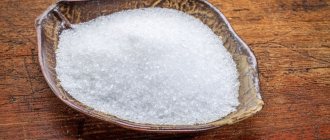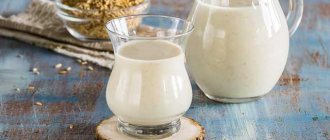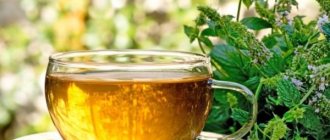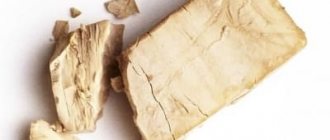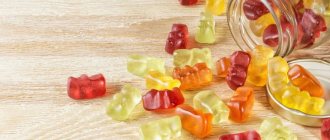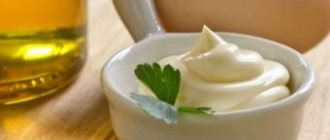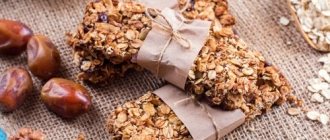Gallbladder tubing (blind probing) is an alternative healing technique that can be used at home to eliminate congestion in the gallbladder and bile ducts. A simple procedure helps to get rid of constant nagging pain in the right hypochondrium and cleanse the gallbladder and liver of accumulated toxins and stagnant bile. Self-cleansing is allowed after consultation with your doctor and only if there are no stones in the gallbladder.
Composition and functions of bile
Recently, blind probing (blind tubing) of the liver and gallbladder, which can be done independently at home, has become increasingly popular among patients with diseases of the hepatobiliary system. In order not to harm your health, it is important to understand why tubage is needed, what functions bile performs in the human body, and for what diseases gallbladder stimulation can be performed.
Compound
The main indication for the use of tubage is stagnation of bile in the gallbladder, associated with both inflammatory processes and obstruction of the bile ducts. Bile (bile) is a thick liquid with high viscosity, a rich yellowish-brown or yellow-green color, a pungent odor and a very bitter taste. Bile is produced by liver cells (hepatocytes), accumulates in the bile ducts of the liver, after which it is excreted into the gallbladder and partially into the duodenum, where food coming from the stomach is digested and vitamins and other useful elements are absorbed.
Pancreatic steatosis (fatty infiltration, fatty lipomatosis) is a pathological process that is characterized by the irreversible replacement of functionally active cells with lipocides. Read more in the article: “Pancreatic steatosis: what is it?”
Depending on the level of acidity and primary localization, two types of bile are distinguished:
- young (liver) bile
. It is excreted directly into the duodenum to ensure the active phase of food digestion. Under the influence of enzymes and microbes inhabiting the intestinal mucous membranes, deoxycholic, ursodeoxycholic and other secondary bile acids are formed in young bile; - mature (vesical) bile
. This is a highly concentrated bile containing large amounts of secondary bile acids, phospholipids, cholesterol and pigments (bilirubin). It accumulates in the gallbladder and enters it after primary cleavage in the small intestine, from where bile is returned to the liver (through the venous trunk, which is called the portal vein).
Bile also contains minor amounts of minerals (in the form of sodium and potassium ions), plant steroids, immunoglobulins, proteins and lipophilic xenobiotics.
Functions
Knowledge of the functions that bile performs in the human body allows us to appreciate the importance of methods aimed at improving the motor function of the gallbladder and liver and stimulating bile secretion, which includes tubage.
Some diseases that affect the human body require a special procedure to be performed as part of the overall treatment plan - colonic lavage with an enema. Read more in the article: “enema solution at home.”
Functions of the gallbladder:
- neutralizes the negative effect of pepsin (an organic enzyme that is part of the digestive juice and synthesized by the parietal cells of the stomach);
- crushes fats, facilitates their digestion;
- stimulates peristalsis of the walls of the small intestine for further movement of digested food into the large intestine;
- has a positive effect on the production of mucous secretions and hormones secreted by the gastroenteropancreatic endocrine system;
- removes cholesterol, bilirubin and some metals from the body that cannot be filtered by the renal system;
- prevents adhesion (adhesion, connection) of pathogenic microorganisms;
Stagnation of bile not only leads to disruption of digestive function, but can also cause systemic intoxication of the body and the development of an intense inflammatory reaction (sepsis).
Contraindications
Before performing liver tubing with sorbitol at home, you need to be sure that there are no contraindications. They are presented:
- cholelithiasis with large stones, which is why during an ultrasound examination it is necessary to look not only at the condition of the bladder, but also at the size of the stones. The fact is that stimulation of the bile outflow can activate their movement, which leads to blockage of the excretory ducts and the development of jaundice;
- ulcerative lesions of the mucous membrane of the digestive tract;
- intestinal obstruction;
- colitis;
- decompensated liver failure due to cirrhosis or other pathology;
- pregnancy;
- cancer;
- fever of unknown origin;
- infectious liver diseases;
- urolithiasis.
Tubage is contraindicated in chronic liver pathologies in the acute stage (hepatitis, cholelithiasis, cholangitis).
Who is the procedure indicated for?
Tubage is a medical procedure that involves stimulating the secretion of bile in order to empty organs in which congestion occurs. During tubage, the circular muscles of the gallbladder and common duct, which block the opening of the hollow organs (sphincters), relax, while at the same time the smooth muscles of the walls of these organs contract. As a result, bile begins to flow into the duodenum and participates in the digestive process.
Indications for tubage are the following diseases:
- chronic cholecystitis (calculous);
- biliary dyskinesia;
- liver dysfunction;
- chronic pancreatitis and duodenitis;
- stagnation of bile in the gallbladder.
In addition, this procedure is indicated for atonic constipation in order to improve intestinal motility, since its use helps to normalize digestive processes and accelerate the excretion of bile from the bladder into the duodenum. Tubage can be done to prevent gallstone disease. The cleansing procedure is also useful for absolutely healthy people, since in case of overeating or excessive consumption of fatty and heavy foods, it helps to improve well-being and improve the digestion process.
Duodenal sounding (intubation tube)
This is an instrumental technique for stimulating the motor function of the gallbladder using irritant drugs and a duodenal probe. Irritating substances can be injected directly into the rectum or intravenously (stream or drip). The drugs irritate the walls of the gallbladder, increasing their tone and causing muscle contractions, and also relax the sphincter of the common bile duct, formed at the junction of the pancreatic (cystic) and hepatic ducts. This facilitates the excretion of bile into the proximal small intestine, from which it is collected into a duodenal tube and can be used for a comprehensive diagnosis of biliary tract pathologies.
Preparation for the procedure
Many people do not know how to do gallbladder tubing at home and how important it is to properly prepare for this procedure. If you ignore the preparatory stage, it is impossible to achieve the expected effect of cleansing the biliary tract organs.
It is recommended that a week before the tubing, you begin to follow a diet that excludes the consumption of animal fats. Products must be boiled or stewed. It is forbidden to fry food, especially meat and fish. Eliminate spicy foods, smoked meats, marinades, any instant foods and semi-finished products from your diet throughout the preparatory period. It is also necessary to completely abstain from alcoholic beverages.
How does the procedure work?
On the day of the tubing, before the event itself, it is useful to do several physical exercises to slightly strain the internal organs: do squats or bends. You should open the bottle of mineral water in advance to allow the gases to escape. To enhance the choleretic effect, the day before you can drink a glass of warm water with the addition of a weak choleretic agent (with sorbitol, xylitol, magnesium sulfate). How tubage is performed:
- Heat mineral water to a temperature of 40 degrees (it should be slightly heated over a fire).
- Fill a rubber heating pad with hot water and wrap it in a towel so as not to burn the skin.
- Drink 5-6 small sips of warmed mineral water and lie on your back or right side under a blanket, applying a heating pad to the liver area. These actions relieve spasm of the biliary sphincter and relax the muscles of the biliary tract, which provokes the outflow of bile.
- After 5-10 minutes, you should drink a few more sips of water and lie down again with the heating pad. So, the procedure should be carried out at five-minute intervals until the mineral water is finished.
- When the water is completely drunk, you should lie down with the heating pad on your side for another twenty minutes.
In general, the entire procedure takes the patient no more than an hour, but after it it is advisable to remain in bed for some time, and also drink a lot of liquid (just boiled water or choleretic decoctions). Therefore, if there is no time to carry out the event, you can use the express method: after a 3-day diet, in the morning you drink 1 liter of heated mineral water (with pre-released gas), after which you should do active physical exercise for 10-15 minutes (squats, turns, tilts). Then drink a couple more glasses of mineral water and do a set of exercises again.
The end result of the procedure is the collection of secreted bile, which takes place in three stages.
Portions of bile during duodenal intubation
| A portion | What it is | Type of bile |
| Portion A | It is released through a probe after the olive enters the duodenum. | Transparent, has a light yellow tint. |
| Portion B | Collected after the introduction of an irritant (magnesium sulfate 25%, sodium bicarbonate solution 2%, etc.). | Thick, concentrated, dark brown or olive in color. |
| Portion C | The final portion is released after the gallbladder is emptied. | Transparent, without impurities. |
Preparation for the procedure
Preparation begins the day before the procedure. For this purpose the following measures are provided.
- — The patient is taking atropine to reduce the secretion of the salivary, gastric glands and pancreas. And also to prevent spasms during swallowing of the probe.
- - Drinking warm water with xylitol is a moisture-retaining agent.
- — The patient is given a light dinner.
Immediately before the procedure, they practice taking various irritants - magnesium sulfate, olive oil, peptone solution, sodium chloride, xylitol or glucose (to choose from).
Separately, prepare and disinfect the instruments necessary for the procedure - probe, clamp, stand, syringe, test tubes, tray.
Tubage at home: rules and recipes
Liver tubing outside the hospital is permitted only after consultation with the attending physician. An obligatory stage of preparation is an ultrasound diagnosis of the abdominal organs, since the recipes listed below at home are contraindicated in the presence of stones in the cavity of the gallbladder and its ducts.
Listed below are the most effective and efficient tubage recipes that will help quickly eliminate congestion and normalize the flow of bile.
Recipe 1: Sorbitol cleansing
When choosing sorbitol as a provocateur for bile excretion, a tablespoon of powder is added to mineral water. For the procedure, you will need another glass of water, which you drink until you get the choleretic liquid. Further actions must be in accordance with the overall plan.
There are several effective tubage recipes that allow you to properly cleanse the intestines and gallbladder with the help of sorbitol and mineral water:
- Add 2-3 tablespoons of sorbitol to warm mineral water without gas.
- The solution is drunk on an empty stomach.
- Then you need to lie on the bed and put a heating pad under your right side for 2 hours.
- During the specified time period, the patient begins to feel the urge to defecate.
You need to repeat the tubage with mineral water and sorbitol 2 times a week for two months. During cleansing, it is forbidden to move suddenly. Turns and movements should be slow and smooth.
Recipe 2: Egg Cleansing
In the morning on an empty stomach you need to drink 2 raw egg yolks, and after 15 minutes drink 2-3 glasses of warm mineral water. You need to lie in bed with a warm heating pad under the right hypochondrium for at least 1-2 hours. Raw yolks can be replaced with boiled ones (for safety reasons).
Tubage with raw eggs is carried out according to the following scheme:
- separate the whites from the yolks (you can use an egg separator);
- without shaking, drink the yolks;
- after 20-25 minutes, drink 450-500 ml of mineral water in small sips and lie on your side, placing any source of dry heat under it (a heating pad, an ironed diaper, etc.);
- lying down, drink the remaining water.
Prolonged stay in a supine position – about 1.5 hours.
Recipe 3: berry tubage
Tubage using a decoction of rose hips is one of the most effective and pleasant ways to stimulate the motor and secretory functions of the gallbladder. Rosehip has a pronounced choleretic effect and is included in many medicines used to eliminate bile stagnation (for example, Holosas syrup). Tubage with rosehip decoction differs from other methods of tubage: it needs to be done several times in a row (usually 6-7 times with an interval of 24-72 hours), and after taking the decoction there is no need to lie down, which allows you to do household or professional duties and does not disturb the work rhythm.
Tubage is carried out according to the following scheme:
- crush 100 g of fruits, pour 700 ml of boiling water over them and cook over low heat for about 15 minutes (this should be done in the evening);
- Strain the finished broth and pour into a thermos;
- the next morning, drink 300-350 ml of decoction, to which you need to add 5-10 g of xylitol;
- After half an hour, drink the remaining broth in the same way.
You can have breakfast 1-2 hours after the procedure. It is better to choose plant-based dishes, such as fruit or vegetable salad, casserole, fruit soufflé or pudding.
Recipe 4: lemon-oil tubage
On the day of liver tubing with olive oil at home, you need to drink more warm, almost hot liquid. This is necessary in order to warm up the internal organs and dilate the blood vessels. This approach promotes better circulation of blood and bile through the ducts. 3-4 hours before the procedure, you can take a little plant food. Liver tubing with olive oil at home must be done gradually to avoid nausea.
You need to take 2 sips of olive oil. If you do not like its taste, you can use sunflower oil. Wash it down with lemon or any other sour juice, for example, rowan or cranberry. The sour taste of the juice also stimulates the rapid release of bile, which is why it is very useful. Oil and juice should be consumed in equal quantities - 150-200 grams each. After this, you need to tightly attach a heating pad with hot water to your right side and lie on it. Keep the heating pad on for about 2 hours. This cleansing method is not recommended for people with high acidity, since fruit acid will further increase the acidity.
Recipe 5: medicated tubage
This cleansing requires advance preparation in the evening. It is necessary to dissolve a tablespoon of magnesia powder in a glass of water and leave it on the table until the morning. In the morning, immediately after waking up, you should drink a glass of solution and go back to bed, where, lying on your right side, warm the liver area with a hot heating pad. Warm-up time should be one and a half hours. This method is also commonly called “Demyanov’s tubage”, calling the cleansing after the developer’s name.
Recipe 6: tubage using sodium salt
Sodium salt of sulfuric acid (sodium sulfate, bitter salt) is a very effective remedy for tubing the liver and gall bladder at home. The procedure is carried out similarly to a tube with magnesium, but the scheme is slightly different: to achieve a stable result, you need to take the product for three days in a row. The dosage is the same as for magnesium sulfate - 10-15 g of salt per glass of hot water.
Essence and mechanism
So, if you are diagnosed with a slight stagnation of bile, liver tubing will correct it. There are many cleaning methods, from which it is difficult to choose; it is better if a doctor recommends a specific method. He will also tell you how often the procedure can be done in your case.
Let's start with a description of the classical technique according to Demyanov:
- After waking up, take 2 tablets of no-shpa or drotaverine.
- Then you need to drink a glass of water with magnesium heated to 40 degrees. Ratio – water 200 ml, magnesium – 1 tbsp. spoon.
- Lie in bed on your right side, placing a warm heating pad under the liver area. Stay in this position for at least 2 hours.
The subsequent bowel movement indicates that the procedure was carried out correctly. If the stool has a greenish tint, this is a sign of the presence of bile in the stool.
Important! Bitterness in the mouth at the beginning of the procedure and discomfort in the right hypochondrium are acceptable. But be sure to tell your doctor about them.
Now let's talk about other types of tubage that are popular.
Active tubing: what is it and how to do it
This is the fastest and most effective way to cleanse the liver, gallbladder and intestines, which is suitable for many patients (despite this, it is necessary to exclude the possible presence of individual contraindications). To carry out active cleansing you must:
- in the morning, drink 700-800 ml of mineral water in small sips;
- carry out active gymnastics, in which pelvic movements, bends and turns predominate;
- after completing the gymnastics, drink another 300-400 ml of water and repeat the exercises (1 approach).
After charging, you should lie down in bed and cover yourself with a blanket. In most patients, abundant stool occurs within 15-40 minutes.
How to prepare
How to properly perform a liver tubage? Preparation for dubazh should begin in advance. It is important to plan the procedure in advance. Three to four days before this, you need to start a diet, ideally a vegetable-dairy diet, with the exception of fatty, fried, and spicy foods.
On the eve of dubage, a cleansing enema is performed. It is best to do the procedure in the morning, ideally on a day off, since it is necessary to maintain a lying position for at least two hours.
Who can do it and who can't
There are contraindications to tubing, and there are many of them. We list the diseases and conditions for which it cannot be done:
- Presence of stones. Stones in the liver and gall bladder are not able to “exit” through the narrow bile ducts, but they may well become clogged or ruptured if you decide to undergo a tubage without a preliminary examination. This is exactly the situation with which the patient ends up on the operating table, so be extremely careful.
- Chronic gastrointestinal diseases also do not require active cleansing manipulations. In this case, follow the regimen and carry out the treatment prescribed by doctors.
- Any acute conditions associated with elevated temperature and intoxication.
- Pregnancy, lactation, menstruation.
- Stomach ache.
- Giardiasis and other parasitic diseases.
- Chronic somatic diseases during exacerbation, stage 3 hypertension, cardiac or renal pathologies.
calculous cholecystitis, cholelithiasis, cholelithiasis;
The list can be continued with relative contraindications. They are stress and overwork, weakness and others. How can you figure out whether you need cleaning or whether you can easily do without it?
Preparatory activities
As already mentioned, performing a tubage is a long procedure and requires concentration. Therefore, before doing tubage at home, you need to first prepare by carrying out a number of simple manipulations. Experts strongly advise doing an ultrasound before starting this procedure to make sure there are no large stones in the gall bladder. If there are any, then tubing cannot be performed: after the procedure, the stones will not come out of the body on their own and you will have to go to the hospital.
You must first cleanse the intestines so that the toxins removed from the liver and gallbladder do not “get stuck” and, being absorbed into the blood, do not poison the body even more.
There are several ways to clean the rectum: a good old enema; drinking plenty of salt water; a series of exercises prescribed by the attending physician; drinking sour juices or water acidified with citric acid. 3-4 days before the procedure, you should change your diet, completely eliminating foods of animal origin and legumes. Only hardcore - plant foods. Note: vegetables can only be stewed or boiled. Raw fruits are also undesirable - only canned or baked (applies to apples and pears). By the way, lovers of black bread will have to give it up and limit themselves to white. You also need to change your drinking regime a little, increasing the amount of water and juices consumed - always sour ones.
An important condition in preparing the body for the procedure is to avoid any alcoholic or low-alcohol drinks.
Moral attitude in this matter is also very important. You need to rest properly, get enough sleep, tune in to the positive and develop confidence in yourself in a successful outcome of the procedure.
What's the result?
If you need a liver cleanse, do the following:
- Visit the clinic, take a biochemical blood test, and undergo an ultrasound of the abdominal cavity. Show the results to the doctor, he will advise the optimal method of cleaning, and at the same time confirm the absence of contraindications.
- Follow the rules of healthy eating.
- Live actively, move more.
- Avoid animal fats, fried and smoked foods, making such food an attribute only on the holiday menu.
- Do not abuse coffee, alcohol, strong tea, eat 5 servings of vegetables and fruits daily.
We think that if you follow these simple rules, you simply won’t need a tube.
